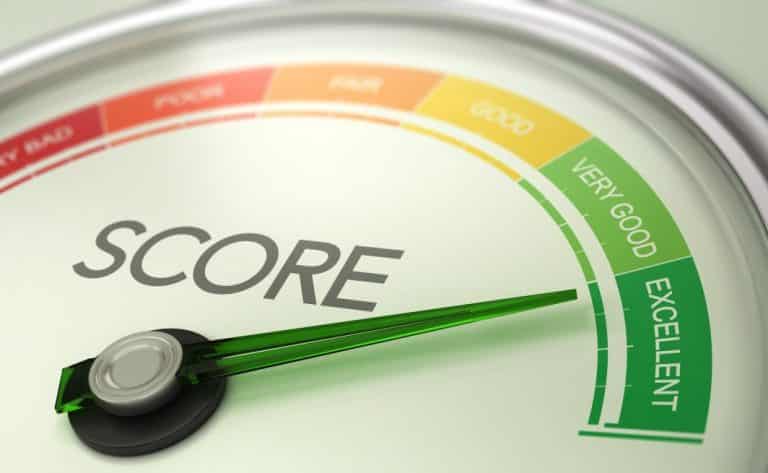Table of Contents
Credit Score Range – 5 Levels and Loan Options
Your credit score range says all about your credit scores like category and loan options. According to statistics on credit scores, only one out of five Americans are aware of their credit scores. As one can infer from the statistics, most Americans show no concern for their credit scores. This article will brief you on the credit score ranges and let you understand the impact they have on your loan availability options.
Credit Score Ranges
The credit score range is the structure that tells people where they belong on the scale of credit worthiness. This credit score range tells you what loan options you are eligible for and helps you in making decisions on securing a loan. You can also use this scale to measure yourself and work on your credit scores to make use of the credit benefits.
The credit score range varies from 300 to 850, which is common for all credit scoring models. The categories of scoring models fall under the categories of poor credit scores, fair credit scores, good credit scores, very good credit scores, and excellent credit scores. While they vary in the limits for each range.
Credit – Basic Things to Know
To clarify, you must first understand the basic concepts like credit scores.
What is Credit?
In simple words, credit describes the customer’s ability to borrow a loan. A customer’s credit worth says if the person is capable of paying back the loan on time or not. Loan providers consider the loan applicant’s credit to make decisions on approving loans.
What Is A Credit Score?
A credit score is a standard to evaluate the loan applicant’s credit worthiness. A credit score is the numerical representation of the applicants’ credit value. A credit score is a three-digit number that varies from 300 to 900. From the moment you open your credit accounts by loans or credit cards, lenders use your financial activities to evaluate your score.
Credit Reporting Agencies
Are you wondering who will calculate your credit scores? Credit reporting agencies are responsible for tracking the customer’s credit history and calculating their scores. Although there are many popular credit reporting agencies, there are three major credit bureaus like Equifax, Experian, and TransUnion. These agencies will help the loan providers with a credit report. Collecting the credit reports from these bureaus will let you know your credit score range.
Credit Scoring Models
The credit score limits for each range and their calculating criteria differ in the credit scoring models. There are many credit scoring models, and the FICO scoring model and Vantage scoring models are quite popular. It is best to break down the credit score range of both the scoring models to better understand them.
FICO Scores and Vantage Scores
Both the models focus on evaluating the applicant’s credit score and help the loan providers with a credit report, but they vary in a few points like the company it belongs to, their scoring models, and the score category.
FICO Scores
The FICO score is the most common credit scoring model. The FICO scores range from 300 to 850 where the higher credit scores have more value and increase the possibility of securing a loan. This is a popular scoring system that many customers and loan vendors prefer.
Qualifying a FICO score is slightly harder than others. The credit reports must have a record of at least one personal loan, credit card, or line of credit you borrowed, and lenders call them tradelines. Tradelines must have at least six months of records, and one must remain active from the last six months.
Factors Affecting FICO Scores
Here are some of the factors to consider when calculating the FICO score of applicants. FICO scores mainly focus on the payment history.
- Payment history: FICO scores mainly focus on the payment history. Paying the debts on time will have a huge impact on the FICO score. The payment history holds nearly 35% of the FICO score.
- Amounts owed: This criterion calculates how much debt you owe and is the second most considered factor that holds 30% of the credit score. If you owe amounts at a larger level, it eventually increases the difficulty to repay them on time.
- Length of credit history: The next important factor is the length of the credit accounts. A longer account history will help you with better credit scores. As most of the negative items will fall from the credit reports. This holds 15% of the credit score.
- Credit mix: Having a record of multiple credit types will have a positive effect on your scores, so it is better to opt for diverse loan options instead of repeating fewer types of loans. This criterion also has a considerable impact on credit scores.
- New credit: New credits on your credit reports hold 10% of your credit history, as more new credits in a shorter period will bring down your credit score. So think twice if it is necessary to apply for a new line of credit like a credit card or auto loan.
Credit Score Ranges
- Poor Credit Score Range – 300 to 579
- Fair Credit Score Range – 580 to 669
- Good Credit Score Range – 670 to 739
- Very Good Credit Score Range – 740 to 799
- Excellent Credit Score Range – 800 to 860
Vantage Scores
Vantage Score credit scores also work with the same intention of evaluating a loan applicant’s credit worthiness, but they differ from FICO scores in certain ways. The Vantage Scoring model was jointly founded by Experian, TransUnion, and Equifax credit bureaus, but is less popular than FICO scores.
Qualifying for a Vantage score is not as hard as qualifying for the FICO scores. The credit applications must possess at least one tradeline like a credit card, line of credit, personal loans, or auto loans. The tradelines’ age is not a factor to consider credit accounts’ eligibility for the Vantage Score. Check out this blog to know more about Vantage Score.
Factors Affecting Vantage Scores
- Credit Utilization Ratio – This factor has a major impact on credit scores. This ratio depicts the number of used credits out of available credit. Users should utilize fewer credits among the available credit and save more.
- Credit Mix – This is another influential factor in credit scores. A perfect credit mix with diverse credits is the right way to boost your credit scores. Plan according to your requirements and wisely choose the loan options.
- Payment history – This is the highly influential factor in FICO scores, and it takes moderate preference in this model. This factor monitors the timely payments of loans. Any missed or delayed payments will bring down your credit scores in considerable numbers.
- Age of credit history: How long the credit account is in use is the other category that influences credit scores. A higher age will help more in boosting credit scores.
- New accounts opened: This criterion has less influence on credit scores. Still, the new accounts opened will lower your credit scores. Because the increase in the number of credits will increase your credit responsibility to repay them on time.
Credit Score Ranges
- Very Poor Credit Score Range – 300 to 499
- Poor Credit Score Range – 500 to 600
- Fair Credit Score Range – 601 to 660
- Good Credit Score Range – 661 to 780
- Excellent Credit Score Range – 781 to 860
FICO Scores Vs. Vantage Scores
FICO Scores | Vantage Scores |
| Most common credit scoring model | Another credit scoring model not as popular as FICO scores |
| Developed by Bill Fair and Earl Isaac in 1956. | By credit bureaus Experian, TransUnion and Equifax in 2006. |
Credit scoring model depends on factors like:
| Vantage scoring model depends on factors like:
|
| The credit range has 5 levels: poor, fair, good, very good, and excellent. | The credit range has 5 levels: very poor, poor, fair, good, and excellent. |
| Hard to qualify for a FICO score. | Simple to qualify for Vantage scores. |
| Should possess at least one tradeline which must be active in the last 6 months. | Should possess one tradeline and do not expect activity status. |
| The age of the tradeline must be a minimum 6 months. | The age of the tradeline doesn’t matter. |
Loan Options for Each Level
The loan options and the interest rates vary with each level. People with low credit scores will pay higher interest rates. Home Loans, Mortgage Loans, Auto Loans, Secured credit cards, Unsecured credit cards, Personal loans are the possible loan options. Let us further discuss the possible loan options and interest loans for each level.
Poor – It is hard for poor credit scorers to receive approval for a loan. Even if there are loan options, it costs high-interest rates or high premium amounts. Users should adopt a secured credit card or secured loans because these credits focus on collateral more than the scores.
Fair – Fair credit scores are a little better than poor credit scores. Still, they are not considered good credit scores. In this range, users can try getting into a good credit score range. However, with some carelessness in timely payments, they can easily slip into poor credit range as well.
Good – This range stands in the center of the credit scale. Credit scores in this range are considered average credit scores. People who fall under this range can get approved for any loans they apply for, with reasonable interest rates.
Very Good – This is considered the safer zone as the people with very good credit scores are capable of having any loans with lower interest rates.
Excellent – Credit scores of this level do not have to worry about loan approvals as they are capable of every loan. Still, people should not keep on taking credits just because they are eligible. They should be careful enough to maintain their credit scores and stay at this level.
Frequently Asked Questions
Which credit score company is popular among people?
FICO credit score company is the most popular among the public. The latest FICO scoring model version is 10, but many widely prefer the FICO score version 8.
What is the credit score range?
The credit score range represents the levels of the credit scores. This credit score helps the loan providers to easily identify the user’s credit worth on the credit scale. This number varies from 300 to 800 and are in different categories from poor to excellent ranges based on the credit limit.
What are credit scoring models?
The credit scoring model defines the pattern with which the evaluator calculates the credit scores. In the financial world, there are many credit scoring models developed by many companies. Out of which FICO and Vantage are the most popular companies. The credit score range and the factors that affect the strong models differ for different credit scoring models.
Also Read:
Final Thoughts
The credit score range provides you with a clear overview of each credit score range. If you are handling a credit account, the first thing you must do is know your credit score and figure out in which category it belongs. Based on the credit score range, your credit benefits and loan options will vary. You must keep track of your credit score and try to fit yourself into a very good or excellent credit range that will let you receive approval for any loans with low-interest rates.
To help you with your credit scores, credit repair companies like The Credit Pros can help you with their cheap and standard service. Make use of our free consultation call to reach our experts for help. Contact us – 8004113050



